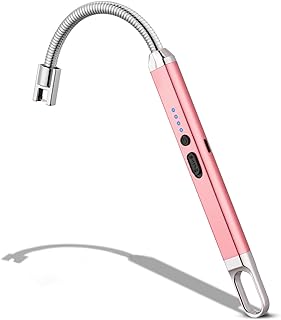The Anatomy of a Lighter: Understanding Its Components
A lighter, though seemingly simple, is a marvel of engineering that harnesses the power of combustion to generate a flame. Here's a breakdown of its essential components:
1. Fuel Source:
* Butane: The most common fuel for lighters, butane is a highly flammable gas stored under pressure.
* Propane: Offers a hotter flame than butane but is less commonly used.
* Lighter Fluid: A liquid fuel sometimes used in wick-type lighters.
2. Fuel Tank:
* Metal Cylinder: Typically made of brass or steel, this cylinder houses the pressurized fuel.
* Valve: Controls the flow of fuel to the burner.
* Filler Valve: Allows for refilling the fuel tank.
3. Ignition System:
* Flint: A small, hard piece of metal that creates sparks when struck.
* Wheel: A serrated wheel that rotates against the flint to generate sparks.
* Spark Generator: Converts mechanical energy from the wheel's rotation into electrical energy, creating a spark.
4. Burner:
* Jet: A small hole that directs the fuel flow from the tank towards the spark.
* Flame Adjuster: Allows for controlling the size of the flame.
5. Other Components:
* Body: Provides structure and protection for the internal components.
* Ignition Button: Triggers the spark generation mechanism.
* Safety Features: Some lighters have features like a child-resistant mechanism or a fuel-lock valve.
How it Works:
1. Pressing the ignition button: This activates the spark generator, which strikes the flint.
2. Spark generation: The spark ignites the fuel vapor exiting the jet.
3. Fuel flow: The valve releases a controlled amount of fuel from the tank, creating a sustained flame.
4. Flame control: The flame adjuster regulates the flow of fuel to control the flame size.
Types of Lighters:
* Disposable lighters: These lighters have a single, built-in fuel tank and are designed for single use.
* Refillable lighters: These lighters have a refillable fuel tank and can be used multiple times.
* Wick lighters: These lighters use a wick soaked in liquid fuel and are typically used for lighting candles.
Safety Considerations:
* Flammable: Lighters contain highly flammable fuel and should be handled with care.
* Keep away from children: Lighters are not toys and should be kept out of reach of children.
* Proper storage: Store lighters in a cool, dry place away from heat sources and direct sunlight.
Understanding the anatomy of a lighter helps in appreciating the intricate design and functionality of this seemingly simple device. It also highlights the importance of using lighters responsibly and safely.


